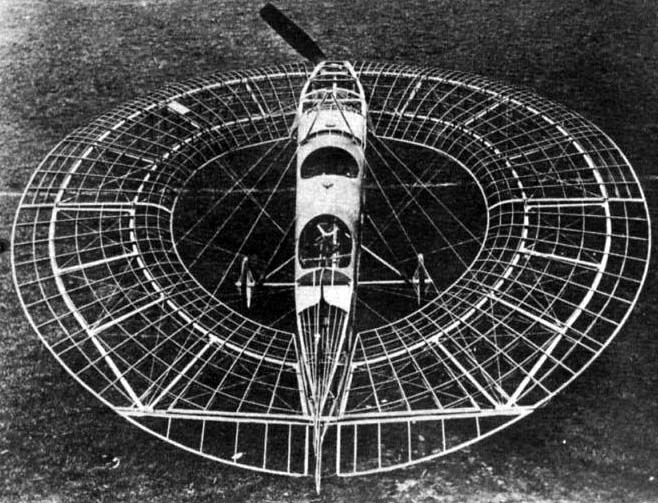Author Guest Post: Matt Merritt
The ‘Flying Doughnut’
At the start of the aviation age, Williband Franz Zelger invented the circular-wing aircraft. The British boiler engineer John George Aulsebrook Kitchen was the first to build this annular-wing biplane. However the ‘Flying Doughnut’ as it became known couldn’t actually fly. In 1910, Shoreham Aerodrome in West Sussex was created. Cedric Lee who was based there purchased this biplane’s patent and invited George Tilghman Richards to join him on the project. Richards was a freelance engineer who had previously worked for Rolls Royce. He was a member of the British Gliding Association and was a founding member of the Manchester Aero Club. Tilghman Richards and Cedric Lee fitted a 50 horsepower (37 kW) Gnome Omega engine in the front of the plane. In those days plane engines were equivalent to those of a powered lawn mower. Flight tests in 1911 of the Lee-Richards annular biplane were an unfortunate failure. The strange hopping machine was then destroyed when its hangar was blown down onto it during a gale force wind at Shoreham Aerodrome.
Undaunted Richards and Lee built an annular glider that had a circular lower wing with an auxiliary wing mounted above the front half of the circle. The glider soared through the sky and encouraged by its success they constructed an annular monoplane.

The skeletal circular wing was curved rising to five degrees in height from its edge. The wing was mounted higher at the front of the central box fuselage to allow a column of air to pass through the central hole in the wing and across the fuselage to improve flight stability. The flaps were on the back of the wing, either side of the vertical tail fin and its rudder.
The Lee-Richards annular monoplane nicknamed the ‘Flying Doughnut’ took off on its first and only flight from Shoreham Aerodrome on the 23 November 1913. It was piloted by Eric Gordon England who found the plane to be stable in the air but tail-heavy. He reached a considerable height before the engine failed and he had to bail out of the open cockpit – with no parachute! Fortunately telegraph wires broke his fall.
A second ‘Flying Doughnut’ was built with a covered frame and the tail surfaces modified and reinforced with struts and bracing. Gordon England was again its pilot, operating the plane from the open rear cockpit mounted far back on the fuselage. When the engine was started it belched exhaust gasses from the fuselage underside in front of him. The flight was a success and led to the construction of a third improved ‘Flying Doughnut.’ The general characteristics were for a crew of two. The length was twenty-feet and three inches with the circular wing measuring two hundred and eighty feet in diameter. The curvature of the wing was reduced to one and a half inches. A Gnome Lambda seven cylinder air-cooled rotary piston engine powered it that generated 80 hp (60 kW). It had a two bladed propeller and fixed tricycle wheels for take off and landing. In flight its maximum speed was eighty-five miles per hour and it could fly for three hours.
In 1914 the First Sea Lord Of The Admiralty, Winston Churchill was interested in experimental aircraft with a view to equipping the recently formed Royal Naval Air Service. It was a time when tensions between European nations were worsening and it was feared Britain could be dragged into a future war between Germany and France. Winston Churchill visited Shoreham Aerodrome to see the ‘Flying Doughnut’ for himself. Work continued on the project throughout April 1914 with a fourth and a fifth aircraft in production with the intention of entering the Gordon Bennett Air Race. However the project was abandoned due to mechanical problems as the futuristic ‘Flying Doughnut’ was an aircraft that was way ahead of its time. Flyable circle wing aircraft have featured in various top-secret projects ever since, and are the cause of many sightings of Unidentified Flying Objects. In 1937, a 1:10 scale model of a Lee-Richards annular-type monoplane was commissioned by the Science Museum and put on display there. Denton Partners, (Reading) built a replica of the Lee-Richards Annular Biplane for the 1965 film ‘Those Magnificent Men in their Flying Machines’. It is currently on display at the Newark Air Museum.
Matt Merritt’s book ‘The Royal Engineers In Korea’ will be published by Pen and Sword in April 2024.


